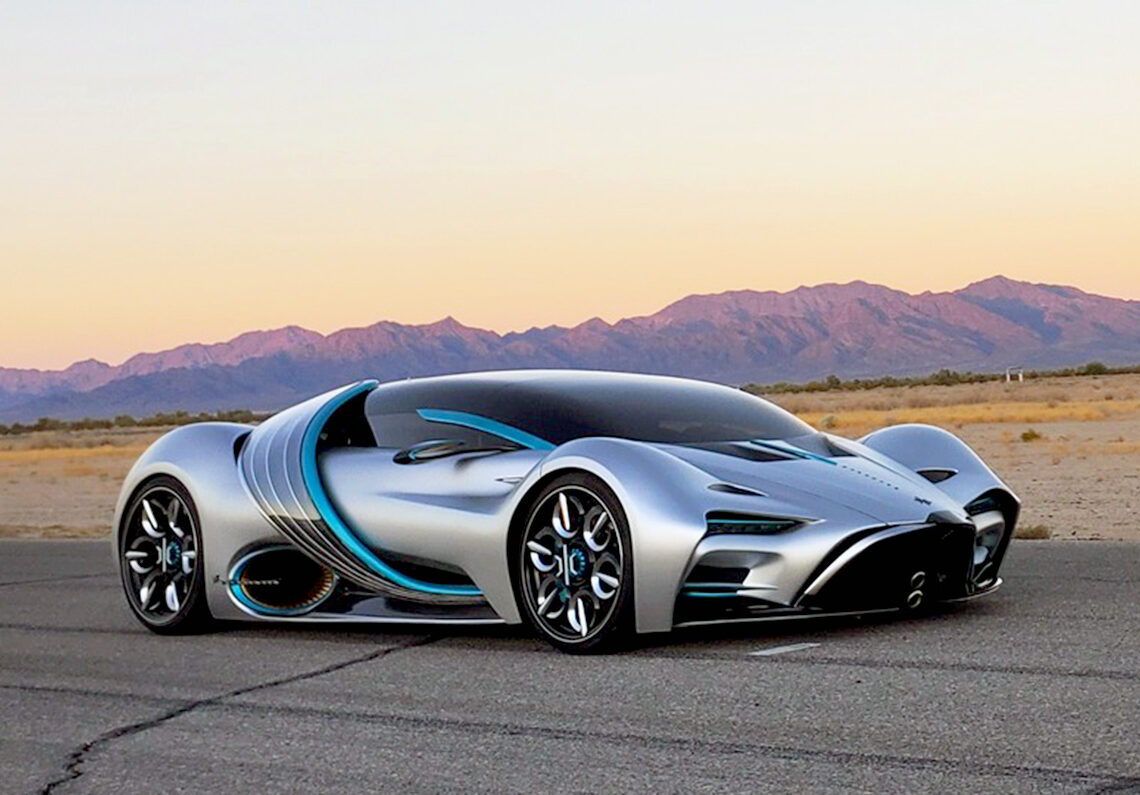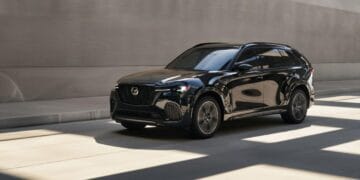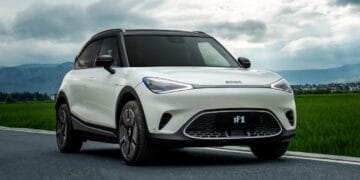Hybrid’s Strategic Advantage
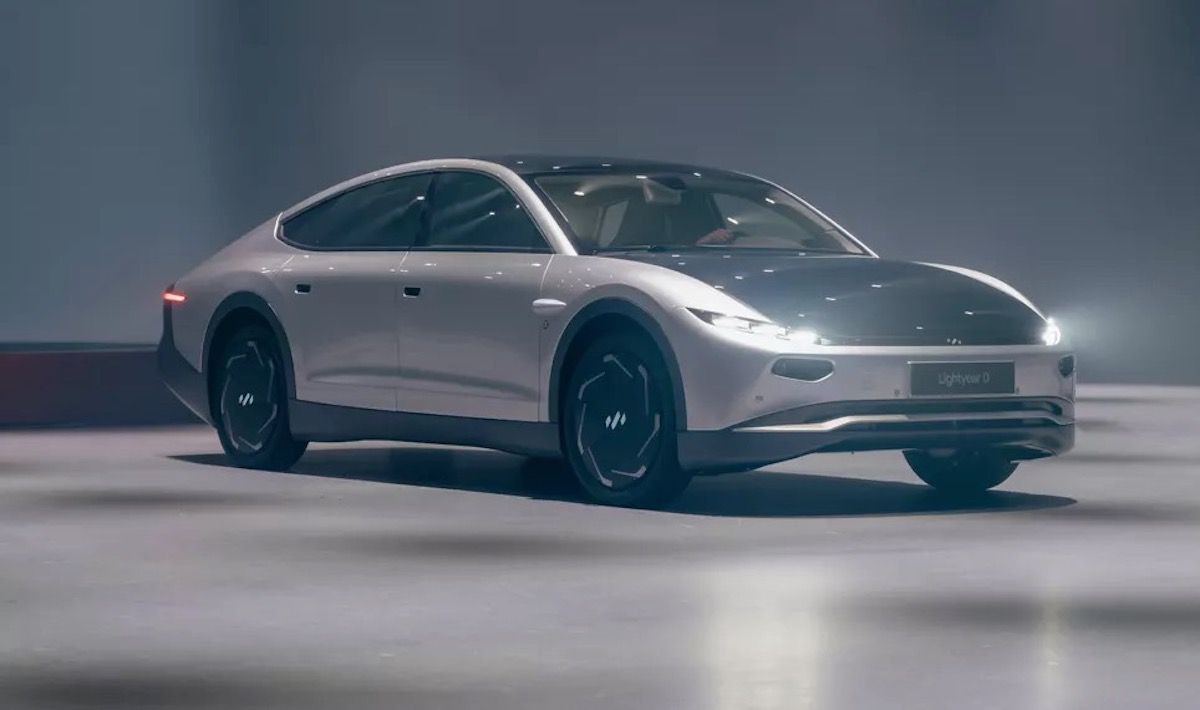
For decades, the choice was largely between gasoline or diesel power. However, as environmental concerns escalated and fuel prices became more volatile, the need for more efficient and cleaner alternatives grew. Hybrid power emerged as an ingenious solution, combining the established range and refueling convenience of fossil fuels with the immediate torque, efficiency gains, and emission reductions of electric propulsion. This “best of both worlds” approach has allowed hybrids to carve out a unique and increasingly significant niche in the market.
The appeal of hybrid vehicles stems from their ability to deliver tangible benefits without requiring a radical shift in consumer behavior or extensive charging infrastructure. Imagine a vehicle that dramatically reduces your fuel bill in stop-and-go city traffic, provides a silent, smooth driving experience at low speeds, and still offers the confidence of long-distance travel without range anxiety. For governments, hybrids offer a pragmatic pathway to reducing overall fleet emissions. For consumers in markets where full EV adoption faces infrastructure or cost hurdles, hybrids provide an immediate and impactful step towards greener motoring. This convergence of efficiency, practicality, and environmental responsibility ensures that hybrid power remains a highly relevant and valuable technology in the ongoing automotive revolution.
What is Hybrid Power?
The term “hybrid power” encompasses a range of distinct technological configurations, each offering unique benefits and applications:
A. Mild Hybrids (MHEVs):
A. Principle: These use a small electric motor (often an integrated starter-generator, ISG) and a small battery to assist the internal combustion engine (ICE). The electric motor cannot power the vehicle independently for any significant distance.
B. Benefits: Primarily focused on improving fuel efficiency and reducing emissions by assisting the ICE during acceleration, allowing for smoother auto start/stop functionality, and enabling “coast” or “sail” modes where the engine can temporarily shut off. Less complex and generally more affordable to implement than full hybrids.
C. Energy Recovery: They capture energy through regenerative braking to recharge the small battery.
B. Full Hybrids (HEVs) or Self-Charging Hybrids:
A. Principle: Feature a larger electric motor and battery pack than mild hybrids, allowing the vehicle to run on electric power alone for short distances and at low speeds (e.g., in city traffic or parking lots). The ICE charges the battery, and they cannot be plugged into an external power source.
B. Benefits: Significant fuel efficiency improvements, especially in urban driving cycles where the car can frequently switch to electric-only mode. No need for charging infrastructure, offering seamless adoption for consumers accustomed to traditional fueling.
C. Energy Management: Sophisticated power electronics seamlessly blend power from the ICE and electric motor for optimal efficiency and performance.
C. Plug-in Hybrid Electric Vehicles (PHEVs):
A. Principle: Combine an ICE with a more powerful electric motor and a larger battery pack than full hybrids. Crucially, they can be plugged into an external power source (home charger, public charger) to fully recharge the battery.
B. Benefits: Offer a substantial all-electric driving range (typically 20-60 miles or 30-100 km), allowing many daily commutes to be completed with zero tailpipe emissions. The ICE provides the flexibility for longer journeys, eliminating range anxiety and reliance on charging infrastructure for extended trips.
C. Versatility: Provide the “best of both worlds” for consumers who want to experience electric driving without the full commitment or infrastructure challenges of a BEV.
D. Series Hybrids:
A. Principle: The ICE acts solely as a generator to charge the battery or power the electric motor, never directly driving the wheels. The wheels are always driven by the electric motor.
B. Benefits: Can offer smooth, EV-like driving experience with the convenience of a gasoline “range extender.” Can optimize ICE operation for peak efficiency.
C. Applications: Less common in passenger cars, sometimes seen in commercial vehicles or specific car models where the engine acts as a generator (e.g., some Honda e:HEV systems operate this way for much of the time).
E. Parallel Hybrids:
A. Principle: Both the ICE and the electric motor can directly power the wheels, either independently or together. This is the most common full hybrid configuration.
B. Benefits: Allows for a flexible power delivery strategy, optimizing for efficiency or performance as needed.
C. Examples: Most Toyota and Lexus hybrids utilize a sophisticated parallel-series hybrid system.
Tangible Benefits of Hybrid Power
The widespread adoption of hybrid vehicles is driven by a range of concrete advantages for consumers, the environment, and the broader energy landscape:
A. Superior Fuel Efficiency:
A. Urban Driving Optimization: Hybrids excel in stop-and-go city traffic, where regenerative braking recaptures energy and the electric motor can power the car at low speeds, significantly reducing gasoline consumption compared to ICE vehicles.
B. Engine Shutdown: The ability for the ICE to frequently shut off when coasting, braking, or at a standstill, and for the electric motor to power the vehicle at low speeds, dramatically saves fuel.
C. Hybrid Synergy: The seamless combination of power sources ensures the ICE operates in its most efficient RPM range for longer periods.
B. Reduced Emissions:
A. Lower Tailpipe Emissions: By consuming less gasoline and operating on electric power more frequently, hybrids significantly reduce CO2 emissions, as well as harmful pollutants like NOx and particulate matter (PM).
B. Contribution to Climate Goals: For many countries, a robust hybrid fleet is a crucial step towards meeting national and international climate change targets.
C. Improved Air Quality: Reduced emissions directly contribute to cleaner urban air, benefiting public health in densely populated areas.
C. Enhanced Driving Experience:
A. Instant Torque: Electric motors provide instant torque, leading to smooth and immediate acceleration, particularly noticeable from a standstill.
B. Quiet Operation: At low speeds and during electric-only driving, hybrids offer a remarkably quiet and refined driving experience, reducing cabin noise.
C. Smooth Transitions: Sophisticated hybrid systems ensure seamless transitions between electric, engine, and combined power, providing a refined driving feel.
D. No Range Anxiety (Compared to BEVs):
A. Flexibility of Fueling: Full hybrids and PHEVs offer the convenience of refueling with gasoline at any traditional gas station, eliminating concerns about charging infrastructure availability or long charging times for extended journeys.
B. Familiarity: This convenience makes hybrids an easier transition for consumers accustomed to traditional fueling habits.
E. Lower Operating Costs:
A. Fuel Savings: Directly translates to lower monthly fuel bills for owners.
B. Reduced Maintenance: While not as minimal as BEVs, hybrids can experience less wear and tear on their ICE components (e.g., brakes due to regenerative braking, less engine idling), potentially leading to lower maintenance costs over time.
C. Potential for Incentives: In some regions, hybrids may qualify for tax credits, rebates, or other government incentives that reduce the total cost of ownership.
F. Increased Resale Value:
A. Market Demand: The growing demand for fuel-efficient and environmentally friendly vehicles often translates to strong resale values for popular hybrid models.
B. Longevity Perception: Many hybrid systems, particularly from established brands, have proven to be exceptionally reliable and long-lasting.
The Role of Hybrid Power in the Global Transition
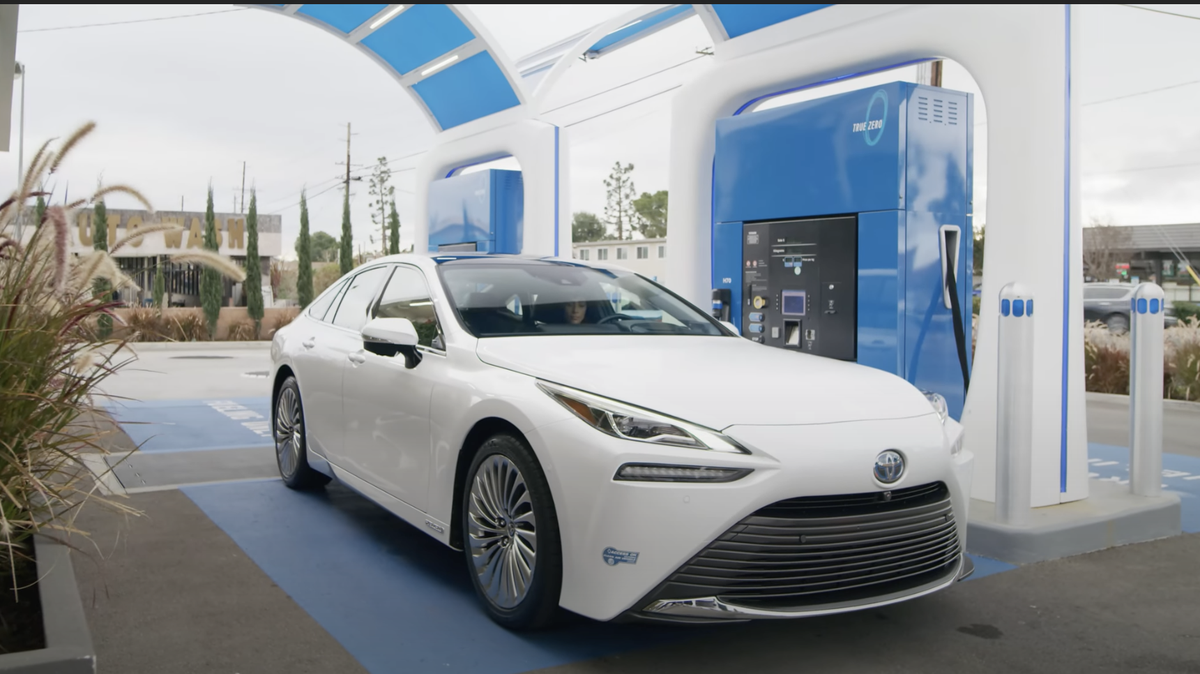
Hybrid technology plays a crucial strategic role in the broader global transition towards electrification:
A. Bridging Technology: Hybrids serve as a vital stepping stone for consumers and markets that are not yet ready for a full transition to BEVs due to cost, infrastructure limitations, or range anxiety. They allow consumers to experience electric propulsion benefits gradually.
B. Infrastructure Agnostic: Full hybrids require no new charging infrastructure, making them immediately viable in any market. PHEVs require some charging infrastructure but retain gasoline flexibility.
C. Decarbonization Pathway: For many countries, achieving emissions reduction targets in the near to medium term relies heavily on the widespread adoption of hybrids, particularly in regions where renewable energy penetration for grid charging is still low.
D. Driver Education: Driving a hybrid subtly educates consumers about electric propulsion, regenerative braking, and efficient driving habits, preparing them for future BEV ownership.
E. Diverse Applications: Hybrid powertrains are versatile, finding applications in sedans, SUVs, minivans, and even commercial vehicles, catering to a wide array of consumer and commercial needs.
Key Technologies Within Hybrid Systems
The sophisticated operation of hybrid vehicles relies on a complex integration of various technologies:
A. Electric Motors/Generators (MGUs):
A. Motor Function: Provides propulsion, either independently or in conjunction with the ICE.
B. Generator Function: Recovers kinetic energy during braking (regenerative braking) and converts it into electricity to recharge the battery. Can also be used by the ICE to generate electricity for the battery.
B. Battery Packs:
A. Nickel-Metal Hydride (NiMH): Common in older and some current full hybrids due to proven reliability and cost-effectiveness.
B. Lithium-ion (Li-ion): Increasingly common in all types of hybrids, especially PHEVs, due to higher energy density, lower weight, and longer lifespan.
C. Battery Management System (BMS): Sophisticated electronics that monitor and control the battery’s charge and discharge cycles, temperature, and health, ensuring optimal performance and longevity.
C. Power Control Unit (PCU):
A. Brain of the Hybrid System: Manages the flow of power between the battery, electric motor(s), and ICE. It seamlessly switches between electric-only, hybrid, and engine-only modes for optimal efficiency and performance.
B. Inverter/Converter: Converts DC power from the battery to AC power for the electric motor and vice versa.
D. Regenerative Braking:
A. Energy Recovery: A fundamental hybrid technology where the electric motor acts as a generator during deceleration, converting kinetic energy (normally lost as heat through friction brakes) into electricity to recharge the battery.
B. Reduced Brake Wear: This reduces reliance on traditional friction brakes, extending their lifespan.
E. Continuously Variable Transmissions (CVTs) or Specialized Transmissions:
A. Efficiency Optimization: Many hybrids use CVTs or planetary gear sets (e.g., Toyota’s Hybrid Synergy Drive) that allow the engine and electric motors to operate at their most efficient points, rather than fixed gear ratios.
B. Smooth Power Delivery: These transmissions contribute to the seamless and smooth power delivery characteristic of hybrids.
Hybrid Power in Dynamic Markets
In markets like Indonesia, the benefits of hybrid power are particularly relevant and impactful:
A. High Fuel Prices: With fluctuating and often high fuel prices, the significant fuel savings offered by hybrids (especially in urban traffic) make them a very attractive financial proposition for consumers.
B. Traffic Congestion: Indonesian cities are renowned for their heavy traffic. This is where hybrids shine, as their electric motors can power the vehicle during frequent stop-and-go conditions, minimizing gasoline consumption.
C. Emerging Charging Infrastructure: While EV charging infrastructure is growing, it’s still developing. Full hybrids require no charging infrastructure, making them immediately viable, while PHEVs offer a flexible transition, leveraging existing fuel stations for long trips.
D. Urban Air Quality: The reduction in tailpipe emissions from widespread hybrid adoption can significantly contribute to improving air quality in densely populated Indonesian cities.
E. Government Incentives: Governments in Indonesia are increasingly looking at incentives for hybrid and electric vehicles (e.g., lower luxury goods tax, road tax reductions) to encourage their adoption as part of national environmental goals.
F. Reliability Perception: Brands known for hybrid technology (e.g., Toyota, Honda) have a strong reputation for reliability in Indonesia, which builds consumer confidence in new technologies.
The Future Trajectory of Hybrid Power Beyond 2025
While BEVs are the long-term goal, hybrid power is not static and will continue to evolve significantly beyond 2025:
A. Increased PHEV Range and Performance: PHEVs will offer even longer all-electric ranges and more powerful electric motors, allowing more drivers to complete daily commutes purely on electricity.
B. More Diverse Hybrid Offerings: Hybrid powertrains will become standard across virtually all vehicle segments, from affordable compacts to luxury sedans and large SUVs.
C. Mild Hybrid Refinement: MHEV systems will become more sophisticated, offering greater fuel savings and smoother operation, potentially incorporating larger batteries and more powerful electric assistance.
D. Bi-directional Charging (for PHEVs): Like BEVs, future PHEVs could incorporate vehicle-to-load (V2L) to power external devices and eventually vehicle-to-grid (V2G) capabilities, turning them into distributed energy storage assets.
E. Integration with Sustainable Fuels: Hybrid systems could be optimized to work seamlessly with sustainable fuels (e.g., eFuels, advanced biofuels) in their ICE component, further reducing their overall carbon footprint.
F. AI-Driven Energy Management: More advanced AI will predict driving conditions and optimize energy management (when to use electric, when to use engine, when to regenerate) for maximum efficiency and range.
Conclusion
The benefits of hybrid power are clear, compelling, and increasingly indispensable in the evolving automotive landscape. By intelligently combining the strengths of traditional engines with the efficiency and clean operation of electric motors, hybrids offer a pragmatic, immediate, and impactful solution for reducing fuel consumption and lowering emissions. They provide a vital bridge technology, easing the global transition towards a fully electrified future, particularly in diverse markets like Indonesia where infrastructure and cost remain significant considerations.
Hybrid vehicles offer drivers the peace of mind of traditional fueling, coupled with the impressive efficiency and quiet refinement of electric propulsion. They contribute significantly to cleaner air, reduce reliance on fossil fuels, and offer compelling economic advantages through lower running costs. As the automotive industry continues its relentless pursuit of sustainability, hybrid power will remain a cornerstone of this journey, constantly evolving to provide smarter, cleaner, and more efficient mobility solutions, ensuring a smoother ride towards a greener tomorrow.

